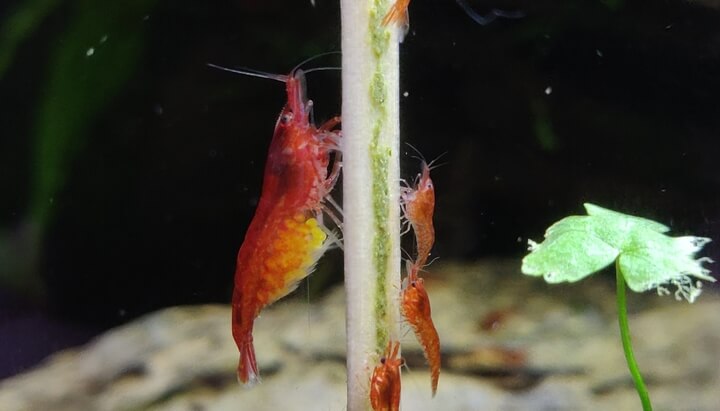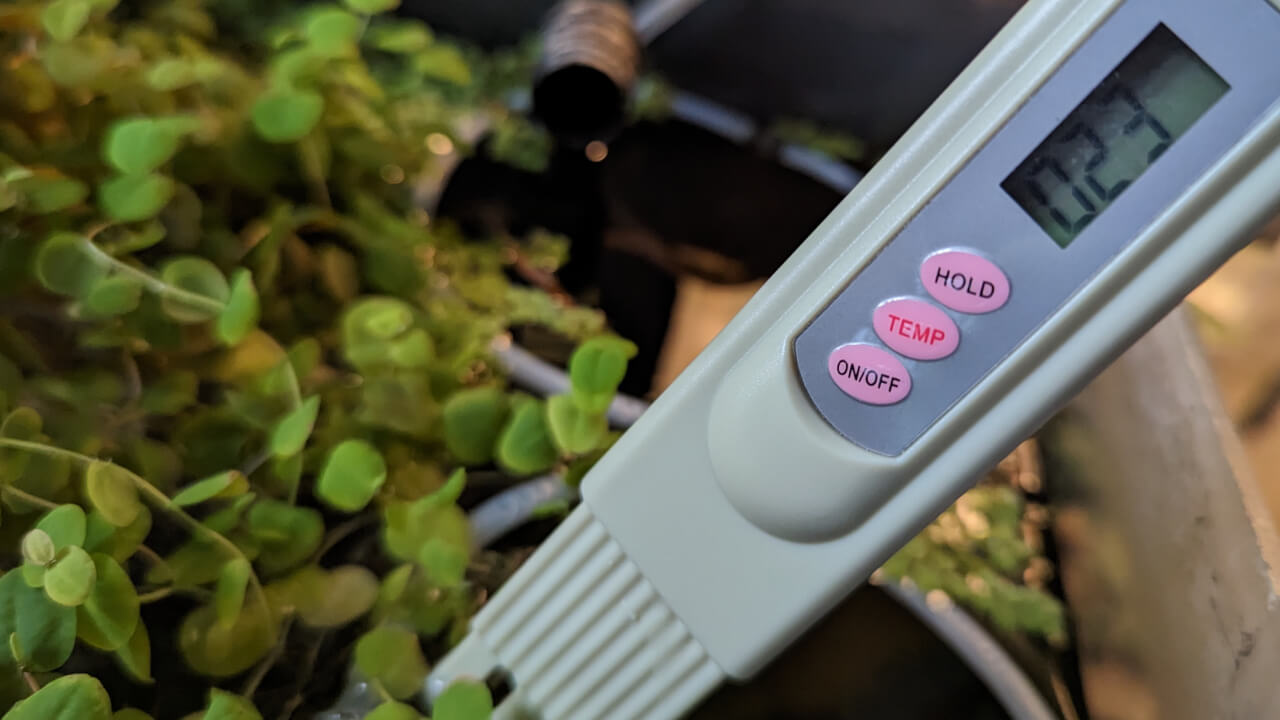No. Most shrimp tanks will do just fine without a heater.
Neocaridina and Amano shrimp are both very hardy species. As long as the changes are gradual, they can deal with a fairly large temperature range.
As a quick guideline:
- Neocaridinas and Amanos can live comfortably between 15 - 30 °C
- Caridinas prefer slightly warmer 20 - 25 °C, but can deal with a lot warmer or colder
I’ve not used a heater in any of my tanks, and they’ve all managed to breed and thrive for over 3 years now.
Stable parameters
Larger tanks will have more stable water parameters, as it takes longer for all the water to heat up or cool down.
Unless your room is very cold, you shouldn’t need a heater in any larger tanks, of say 30L or more.
If you’ve only got a nano tank and your room temperature swings quite a lot, it might be worth getting a small heater.
The main benefit won’t be from having warmer water, but just keeping the temperature consistent.
Minimum temperatures
For Neos, try to keep the temperature above 15 °C at a minimum. They can tolerate periods of time colder than that, as long as the transition is slow and gradual.
Caridina shrimp, also known as Bee shrimp, are more sensitive. You should try to keep their water temperature in a tighter range than you would for Neocaridinas.
Reasons to use a heater
Although using a heater is optional most of the time, there are a few reasons having one can be helpful.
- It may encourage breeding
- Can help biofilm grow quicker
- Helps keep parameters stable
May encourage breeding

You may find that your shrimp breed more often in warmer water, above about 23 °C.
Lower temperatures can slow down their metabolism, meaning they eat less, move around less, and stay smaller. This can also lead to them developing weaker colours over time, lowering their grade.
Don’t expect a sudden burst of breeding activity just from warming the tank up, though. There are quite a few factors for getting a healthy, breeding colony.
Growing biofilm faster
Biofilm is a tasty group of bacteria and algae that make up most of a shrimp’s day-to-day diet.
Giving the biofilm a warm, stable environment to grow will keep your tank well fed.
This is especially helpful for improving the survival rate of baby shrimp. Having a layer of easy to eat food spread throughout the tank gives the babies the best chance.
Reasons to avoid using a heater
- Risk of it getting stuck on, harming your shrimp
- Can be expensive to run in larger tanks
- Takes up space, can ruin the view of a good aquascape
Overheating
It doesn’t happen all that often, but there are a number of stories of shrimp keepers accidentally cooking their shrimp due to a faulty heater.
Essentially, the thermostat responsible for deciding whether the heater should come on can get stuck, or measure the water wrong.
In higher quality heater brands this shouldn’t be too much of an issue, but it’s a very good reason to avoid going with a cheap option.
Expensive
Electricity can be expensive, especially when you’re trying to heat up a lot of water in a big tank.
Obviously the heater element shouldn’t be running 24/7, as it’ll turn off when it hits the target, but over time this can add up.
Using a lid can help prevent evaporation and keep the heat in, saving you some money.
Taking up space
This is totally subjective, but some people really don’t like having to look at a big heater stuck to the side or back of their tank.
A long metal tube can ruin an otherwise beautiful, natural looking aquascape.
You also need to be careful where you place the heater. You don’t want it touching any leaves, or you’ll risk burning them and damaging the plant.
The heated section shouldn’t touch anything in the tank, this includes rocks, wood, and the glass walls.
Otherwise, the best case is the heater doesn’t work efficiently. Worst case if you risk cracking your tank or breaking the silicon sealant.
Tips for using a heater
- Choose the right power
- Think about water flow
- Don’t use a timer plug
- Hide it behind plants and hardscape
Choosing the power
Pick a heater with the appropriate power for your tank size. A rough rule is to use between 3 and 5 watts per gallon.
It can also be a good idea to slightly undersize the heater, so there’s less risk if it gets stuck on.
Water flow
Try and place the heater somewhere near the water flow, if you have a Hang on Back (HOB) filter or similar.
The movement helps to spread the warm water evenly around the aquarium, keeping your shrimp stable and content.
Timer plugs
Using a timer plug for your heater might sound like a good idea, but should be avoided.
It can lead to even more temperature fluctuations than not having a heater in the first place.
For example, if you turn it off overnight, the water will cool down and then quickly come back up to its target temperature when the timer turns on again.
You want to keep it switched on at all times, so that the thermostat can turn the heating element on and off in short bursts to maintain a consistent range.
Hiding it
Whilst thinking about the water flow, also try to hide your heater behind any hardscape rocks or plants.
Be careful to keep a few centimetres of space between the heater and anything else though, or you risk damaging the tank and the heater itself.
Taller plants with big leaves, or viney plants that can grow in a dense bunch are also good ways to hide heaters.

